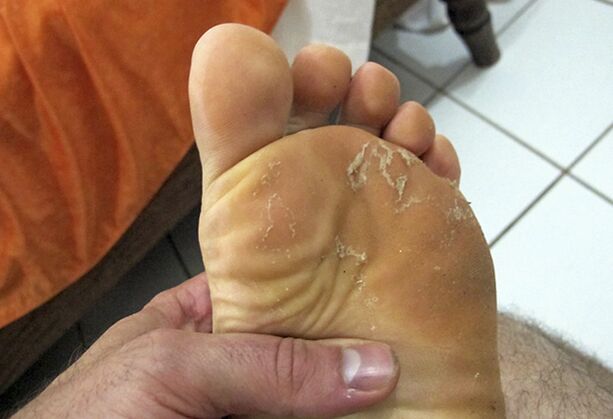
Feat Fungus is a common disease that belongs to the dermatomycosis group and develops due to the activation of pathogenic microorganisms.
The causative agents of the mycosis live in plants and soil, in the body, in the body of animals and keep their lives, in the shoes or clothing of the infected, so that absolutely anyone can be infected with a fungal infection.
What is mycosis of the foot?
The fungus of the legs is the disease caused by pathogenic microscopic fungi, which is a lesion of the skin of the interdigital gaps with the more spreading of the infection in healthy areas of the body.
This pathology can manifest at any age, but especially often the disease is diagnosed in the elderly and people with weakened immunity.
About 50 species of mushrooms that exist in nature are a potential danger.Under the influence of favorable conditions, they are all capable of parasitic on the human body and within it, provoking the development of systemic and local fungal pathologies.
Important!
The fungal lesion of the feet causes a change in the structure of the skin and in the absence of timely treatment, separation of the nails.
MKB code 10
According to ICD-10, Mikoz Stop has code B35.3.
Varieties of fungal diseases on the skin
Experts distinguish several basic types of mycosis on the legs depending on the pathogen.Each variety has its own characteristicsAnd it continues with a number of unpleasant symptoms.
Rabrofytium
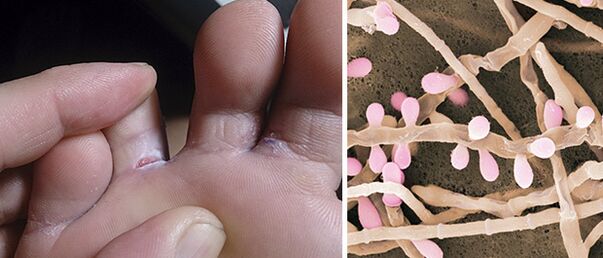
The causative agent isTrichophySThe clinical picture of the pathology begins with the fact that the disease covers the legs and the folding between the fingers, but in the process there is an infection through the body through the lymphhematogenic spread of foreign protein structures.
Candidiasis
Develops due to penetration into the human bodyCandida spongeSThe candidiasis of the stop begins with the lesion of interdigital spaces and nails.At the same time, the area of the nail roller becomes hyperemic and edematous and the patient can be impaired by throbbing pain in the area of damage and severe itching.
Onychomycosis
Damage to nail plaques caused by dermatophytes, fungicandidateSThe fungi are unpretentious for the conditions of existence and are characterized by a high life resistance, so that with advanced form, the disease is difficult to treat.
Intrigued (interdigital) form
The most typical form of mycosis, which is determined by the damage of interdigital folds without the appearance of signs of the pathological process of the foot.As the patient develops, cracks, peeling, erythema and maceration appear.In the future, against the background of the disease, any bacterial infection can develop.
Squamine -hyperkeratotic form
It is characterized by the simultaneous damage to both legs.The disease continues with severe peeling and keratinization of the infected areas of the skin, as well as with the appearance of deep cracks in the affected areas.Itching is insignificant or absent.
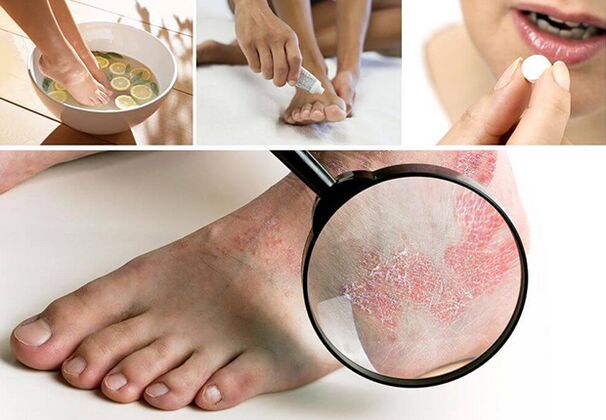
Graphic
Once the infection penetrates the body, many bubbles with a rough surface appear on the patient's skin, hyperemia and an increase in swelling, which makes the grazing form of the disease similar to eczema.After tearing, the bubbles form erosion zonesOn the heel or the rise of the foot.
Deleted form
A variety of mycosis has minimal clinical manifestations in the form of inconspicuous micro -cracks in the interdigital folds of the skin and peeling.The patient does not experience discomfort, which is why the treatment of pathology has been delayed for a long time.
Madur leg
For a long time, deep mycosis that mainly affects the legs.The disease begins with focal inflammation in the subcutaneous tissue and gradually spreads to the soft tissues, internal organs and bones.
In the initial stage, the pathology does not manifest itself, but then at the foot of the infected.The surface of the skin becomes disfigured and looks like the turtle sheath.
Stages of mycosis of stopping
The incubation period of mycosis is 3-14 days, after which the infected person shows the first signs of infection.Dermatologists attract patients' attention to the fact that the disease has several stages of development.
Initially
Patient may not suspect infection such as initialThe mycosis stage is perceived as ordinary dry skinSCracks and redness appear on the foot.There is mild swelling and itching.
Average
At the middle stage, the sponge is identified without difficulty, as large pink spots appear on the skin, the peeling area increases and itching increases.
Neglected
The fungus affects both the foot with interdigital areas and nails.The nails become fragile and brittle, start to break up and sprinkle.The skin is rough, compacted, covered with deep cracks and divided by large layers.
Causes and symptoms of fungal damage
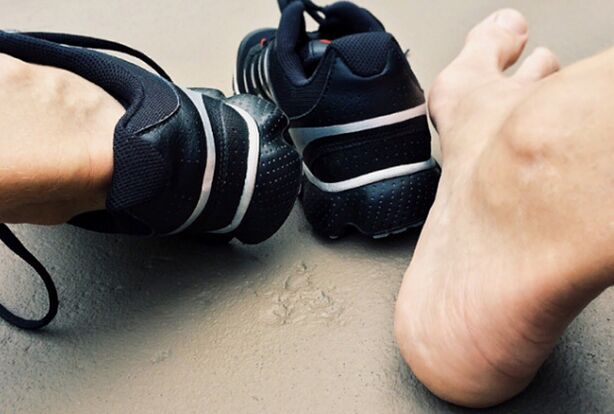
If a person is completely healthy, after direct contact with the source or carrier of the infection, his or her personal things or household items may not have an infection.However, in the case where there are any disorders in the body, there is a high risk of infection.
They become provocative factors:
- weakening of protective functions;
- increased sweating or dry skin;
- prolonged medicine;
- non -compliance with hygiene rules;
- bleeding disorder;
- The presence of microdamines on the skin;
- Excess weight;
- deformation of the legs;
- Wearing tight shoes.
Depending on the location of the inflammation and the shape of the disease, the fungal infection may be accompanied by the following symptoms:
- slight or severe redness of the skin in the lesion;
- itching and burning;
- Skin peeling;
- Change of nail color;
- the appearance of small cracks;
- Charging and thickening of the skin of the feet;
- bubble rashes;
- Unpleasant odor.
Diagnostics
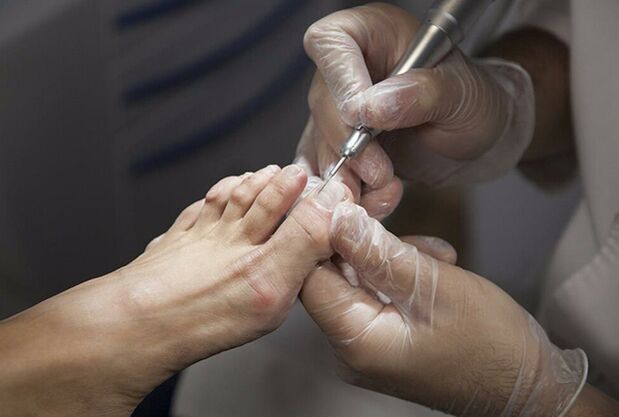
The diagnosis of fungal diseases of the legs is performed by a mycologist and dermatologist who should be associated immediately after the onset of one or more symptoms of pathology.
The specialist will be able to identify the presence of infection during the initial examination, but it will not be possible to determine the type of pathogen without additional laboratory tests.
Determination of the type of fungi is done using:
- general and biochemical blood test;
- scraping from the affected area of the skin;
- sowing the collected material for the nutrient medium;
- skin biopsy;
- A special test to confirm the presence of infection in the body.
Based on the results obtainedThe doctor diagnoses and prescribes treatmentAimed at eliminating a fungal infection and symptomatic manifestations of mycosis.
General Principles for Treatment of Foot and toes Disease (Little Finger)
Mycosis treatment is performed with the help of effective medicines that can be prescribed exclusively by the attending physician.The patient is most commonly prescribed:
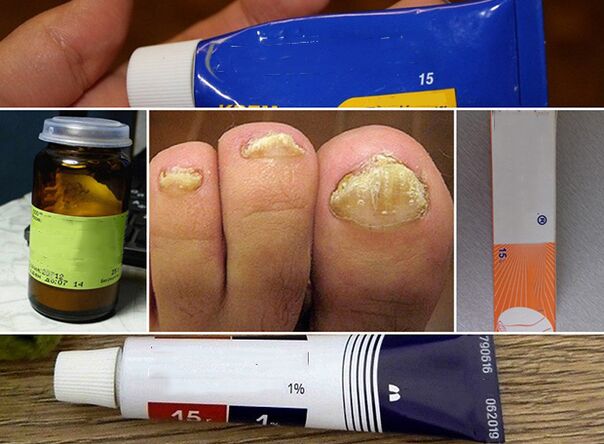
- antifungal agents for internal and external use;
- antifungal;
- corticosteroids;
- antihistamines;
- Polyvitamin complexes.
Important!
In the initial stage of the disease, treatment can be performed using alternative medicine recipes.Many of them help to get rid of the problem quickly, but in some cases they are able to cause an allergic reaction.
How is it dangerous for the mycosis of the sole?
If, after diagnosing mycosis, the patient refuses to cure or ignore the symptoms of the disease, his condition will worsen over time and the symptoms will become more pronounced.Moreover,Lack of treatment threatens the occurrence of complicationsSAmong them:
- the spread of infection in large areas of the skin;
- Development of body hypersensitivity;
- Annexation of secondary infection;
- Complications of related diseases.
Important!
Constant physical and aesthetic discomfort can lead to psychological problems.
Can mycosis of the foot go to other parts of the body?
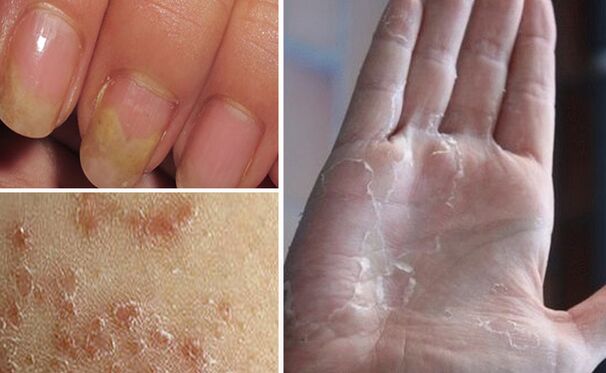
Fungal diseases are not a particular danger to human life, but if no personal rules of hygiene are observed, the infection can spread to other parts of the body, provoking the appearance of large foci of damage.
The patient may also notice the patient's characteristic symptomatic manifestations at the short stages of the development of the pathological process when they become on the skinRounded rashes of pink hue are noticeableOr blisters with transparent content.
Prevention
To prevent mycosis infection, it is not enough to exclude contacts with possible sources of fungal infection.In addition, the information is for a minimum of communication with disease carriers and their personal things, preventive measures must also be directed to:
- observance of personal hygiene;
- treatment of chronic diseases;
- maintaining a healthy lifestyle;
- Strengthening immunity.
The fungus of the legs creates a danger not only for an infected person, but also to his immediate environment, so that after you have discovered the first signs of mycosis, you needTake all possible measures to relievefrom the disease.
In order to avoid complications, it is important to contact a dermatologist in a timely manner for diagnostic measures and prescribe proper treatment with the help of medicines.

























